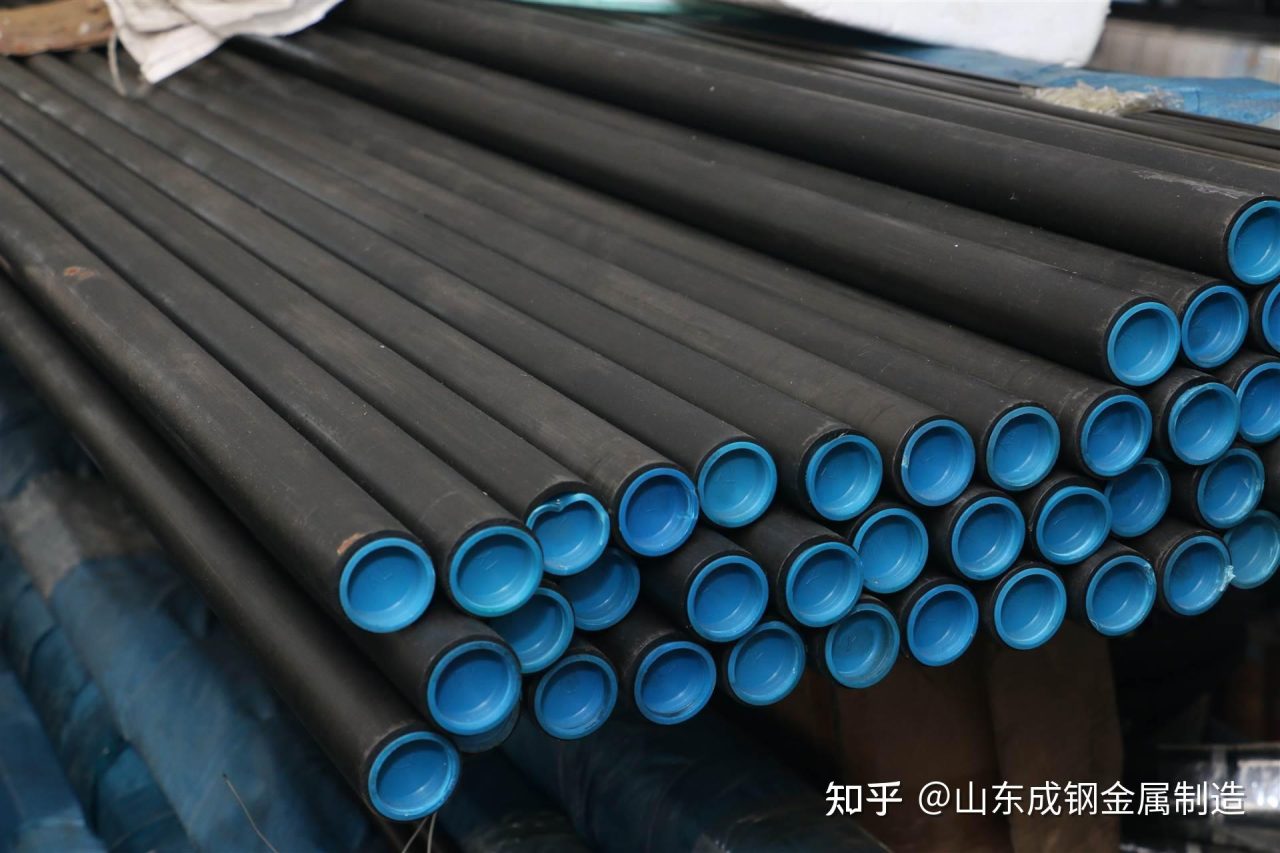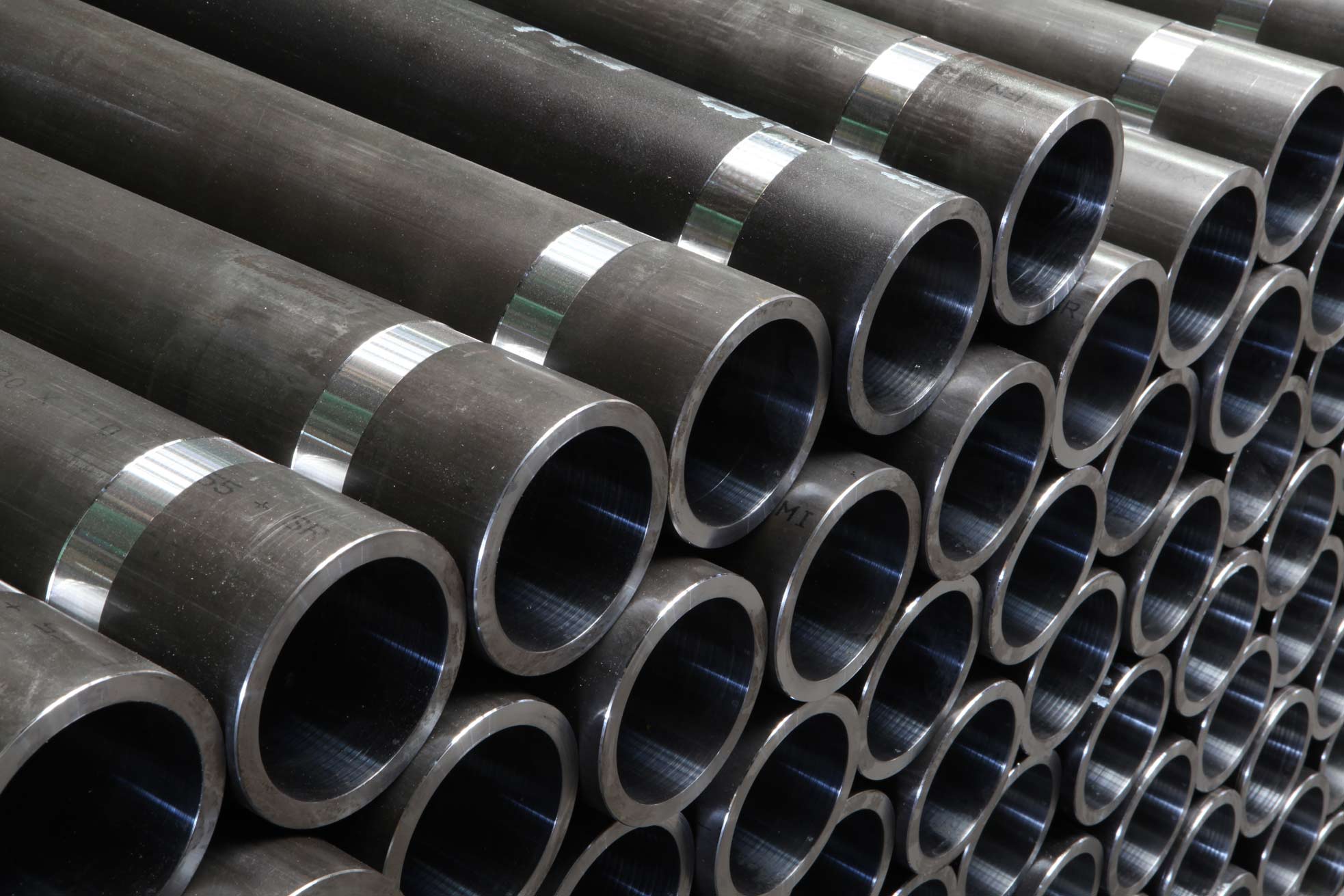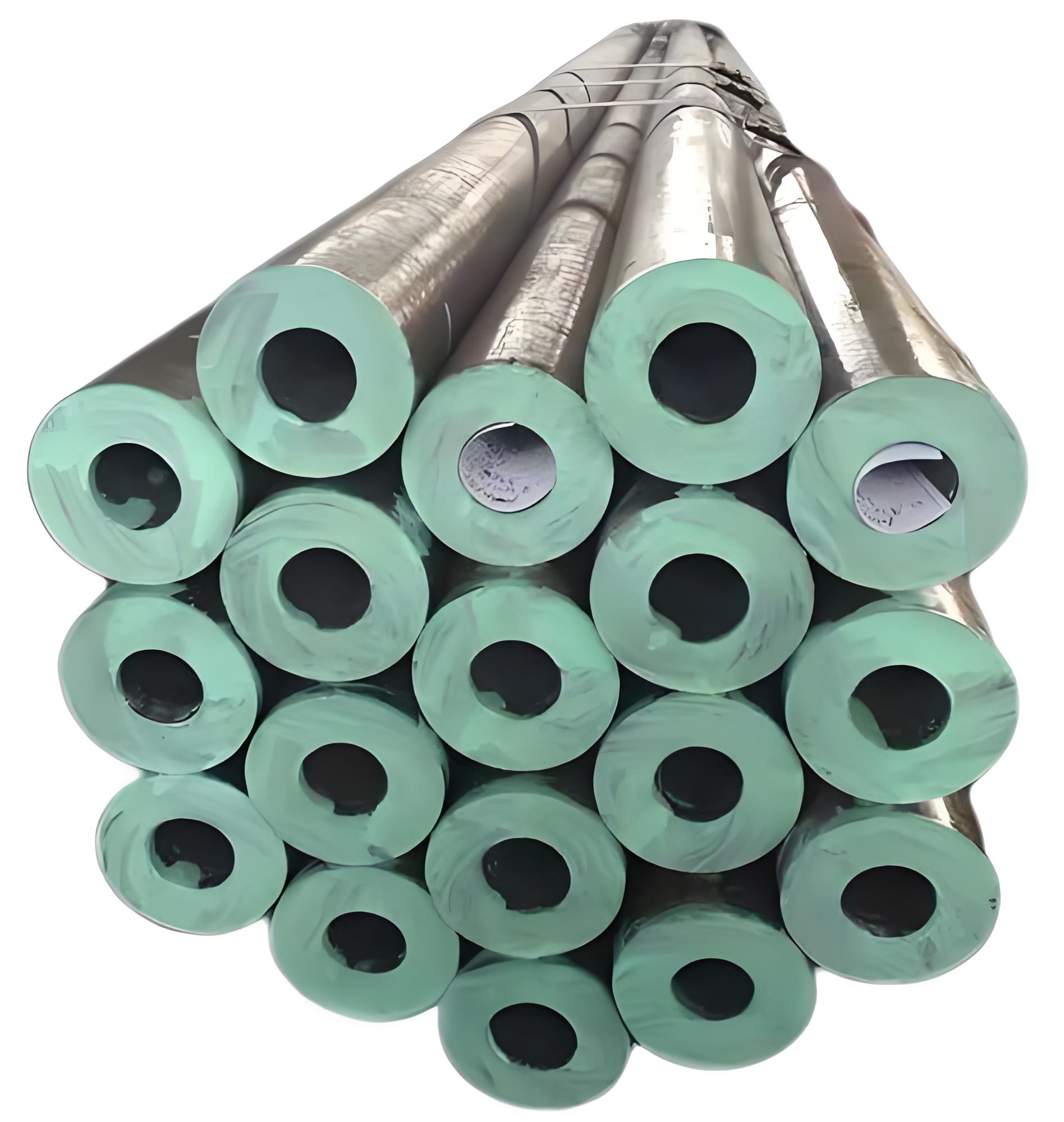DE 2391 Grade St45 Seamless Precision Steel Pipe

The Apex of Dimensional Accuracy: A Technical Exposition on DIN 2391 Grade St45 Seamless Precision Steel Pipe
The domain of high-performance mechanical and fluid power systems—the arteries of modern industrial automation, automotive braking, and complex hydraulic machinery—demands steel tubing that transcends the standards of general-purpose piping. Here, the critical performance metric is not merely bulk strength or pressure capacity, but an uncompromising commitment to dimensional precision, concentricity, and internal surface finish. This specialized requirement is the defining characteristic of the DIN 2391 Grade St45 Seamless Pipe, a product specifically manufactured as a cold-drawn precision steel tube. Unlike hot-rolled pipes governed by standards prioritizing volume and material throughput, DE 2391 dictates a meticulous manufacturing regime designed to achieve micron-level accuracy, making this tube the ideal conduit for sensitive hydraulic fluids and the structural basis for finely machined mechanical components.
The designation St45 signifies a medium-strength, highly formable carbon steel, possessing a minimum tensile strength of $450 \texto{ N/mm}^2 $. This specific metallurgical profile, coupled with the rigorous manufacturing process, ensures the material exhibits the perfect blend of strength to contain high pressures and the ductility necessary for severe cold deformation processes such as flaring, estampagem, and complex bending, which are essential for installation in tight mechanical assemblies. To truly appreciate the engineering value of the St45 seamless tube, one must delve into the interconnected sciences of cold working plasticity, thermal metallurgy, and surface tribology, all of which contribute to its status as a high-reliability component in critical fluid and mechanical systems globally.
1. Precision as a Functional Prerequisite: The Imperative of DIN 2391
The core distinction of the DIN 2391 standard is its focus on the finished product’s dimensional envelope, which directly impacts functional performance, particularly in hydraulic systems where leakage and friction are the primary causes of operational failure.
Desenho a frio: The Alchemy of Dimensional Refinement

The seamless tube begins its life as a hot-rolled (RH) shell, which is inherently subject to relatively wide tolerances in Outer Diameter (DE), Espessura da Parede (Peso), and concentricity. The transformative step that elevates this stock material to the DIN 2391 standard is the process of Cold Drawing (CD).
During cold drawing, the HR shell is pulled through a die, often with an internal mandrel, forcing the steel to undergo significant plastic deformation below its recrystallization temperature. This process accomplishes three fundamental, intertwined objectives essential for precision applications:
-
Dimensional Accuracy and Tight Tolerances: The primary function of CD is to mechanically size the tube, achieving extraordinarily tight tolerances on the OD and ID (often $\pm 0.05 \texto{ milímetros}$ or less), which are necessary for integration with high-precision couplings, vedações, e rolamentos.
-
Wall Thickness Uniformity (Concentricity): Hot rolling often leaves slight variations in wall thickness around the circumference. The drawing process effectively smooths out these eccentricities, resulting in exceptional wall thickness uniformity—a key parameter for calculating reliable burst pressure and ensuring consistent bending properties.
-
Enhanced Surface Finish: The action of the die and mandrel cold-works the internal surface, reducing the Surface Roughness ($\texto{Ra}$ valor) significantly. A low $\text{Ra}$ value is critical in fluid power applications as it minimizes fluid friction (reduzindo o consumo de energia) e, crucially, protects dynamic seals (O-rings, piston seals) from abrasive wear, thereby extending the service life and reliability of the entire hydraulic circuit.
This cold-working process also induces strain hardening in the St45 steel, slightly increasing the yield and tensile strength, which is accounted for in the final material condition (por exemplo, BK).
The Functional Necessity of Precision in Hydraulics
In a high-pressure hydraulic circuit, every deviation from dimensional perfection translates directly into an operational defect:
-
Tolerância: A wide OD tolerance compromises the seal in compression fittings, leading to chronic leakage.
-
Concentricity: Poor wall thickness uniformity makes the tube unpredictable under bending, leading to uneven strain distribution and potential collapse during severe forming.
-
Acabamento de superfície: High internal roughness traps contaminants (por exemplo, metallic debris, escala) which can then be transported through the system, causing abrasive damage to sensitive components like servo valves, Bombas, and actuators—a primary cause of hydraulic system failure.
O barulho 2391 St45 tube is therefore specified not for luxury, but for operational necessity, as its precision directly underpins the reliability and longevity of the mechanical systems it serves.
| Parâmetro | Padrão | General Specification | Tolerance of WT (Trefilado a frio) |
| Primary Standard | DE 2391 | Tubos de aço de precisão sem costura | $\PM 5\%$ para $pm 10\%$ of nominal WT, depending on wall/diameter ratio |
| Grau de material | Rua 45 | Carbon Steel for Mechanical Applications | N / D |
| Supply Conditions | NBK, GBK, BK, BKS | Heat Treated and Cold Drawn | N / D |
| Tolerância dimensional (OD/ID) | DE 2391 | Very Tight, por exemplo, $\PM 0.05 \texto{ milímetros}$ (Aula 1) | N / D |
| Rugosidade da superfície | ISO 4287 | $\texto{Ra} \leq 4 \mutexto{eu}$ (Often $\leq 1.6 \mutexto{eu}$ for hydraulics) | N / D |
| Tolerância ao comprimento | DE 2391 | Typically $\pm 5 \texto{ milímetros}$ for fixed cut lengths | N / D |
2. The Metallurgy of Precision: St45 Chemistry and Formability
The ability of the St45 steel to withstand the severe cold drawing process and subsequent installation bending operations without cracking or requiring intermediate annealing is directly traceable to its specific chemical composition—a tightly controlled low-to-medium carbon steel.
Chemical Purity and the Role of Carbon and Manganese
St45 is classified as a low-to-medium carbon steel, typically containing carbon content in the range of $0.17\%$ para $0.25\%$. This precise balance is engineered for compromise:
-
Strength and Hardness: The carbon content provides the necessary raw strength (hence the $450 \texto{ N/mm}^2$ tensile designation) required to withstand operating pressures without excessive wall thickness.
-
Ductility and Weldability: Critically, the carbon content is kept low enough to ensure excellent Weldability (using methods like TIG or MIG welding) and superior Ductility to undergo multiple cold-drawing passes and severe subsequent cold bending (por exemplo, $90^{\circ}$ bends with tight radii) during installation. High carbon content would lead to excessive hardness and brittleness, causing cracking during the drawing process or subsequent fabrication.
Manganês (Mn) is the primary strengthening agent after carbon, typically present in concentrations between $0.6\%$ e $1.0\%$. Manganese enhances the mechanical properties without the detrimental effect on ductility that excess carbon would cause. Além disso, the content of detrimental impurities like Sulfur (S) and Phosphorus (P) must be kept extremely low. These elements form hard, brittle inclusions (sulfides and phosphides) that become elongated during the drawing process and act as stress risers, significantly increasing the risk of longitudinal cracking during drawing or subsequent fatigue failure in service. High-quality St45 production mandates the use of clean steel with low sulfur/phosphorus content achieved through specialized secondary ladle refining processes.
| Elemento | DE 2391 Rua 45 (Típico) | Functional Significance |
| Carbono (C) | $0.17\% – 0.25\%$ | Provides necessary strength; controlled for weldability and ductility. |
| Silício (E) | $\leq 0.35\%$ | Deoxidizing agent; kept low to maintain formability and weldability. |
| Manganês (Mn) | $0.60\% – 1.00\%$ | Primary strengthening alloy; improves hardenability. |
| Fósforo (P) | $\leq 0.030\%$ | Impurity control; kept low to maintain toughness and ductility (avoids cold shortness). |
| Enxofre (S) | $\leq 0.030\%$ | Impurity control; kept low to prevent longitudinal cracking during cold drawing. |
Internal Surface Preparation and Cleanliness
Before cold drawing, the steel shell must undergo rigorous preparation to prevent scale and rust from being embedded into the surface, which would ruin the final finish. This typically involves Acid Pickling to remove mill scale, followed by a Phosphating or soap coating application. This pre-treatment lubricates the surface for the severe drawing process and ensures that the final NBK condition (Normalizado, Bright Annealed) tube can achieve the required internal surface cleanliness ($\texto{Ra}$ valor) necessary to prevent contamination in sensitive hydraulic fluids. The success of the final precision tube is critically dependent on the integrity of this pre-drawing surface preparation.
3. Achieving Perfection: Heat Treatment and Dimensional Control
The seamless pipe’s final mechanical properties and its ability to function reliably in a hydraulic circuit are determined not only by the chemistry and cold-work but profoundly by the final heat treatment condition. DE 2391 defines several supply conditions (por exemplo, BK, BKS, GBK, NBK) corresponding to specific thermal and mechanical processes.
The Absolute Requirement: The NBK Condition
For the most critical applications, particularly high-pressure hydraulic lines and cylinders, the NBK (Normalized Bright Annealed) condition is the gold standard, combining the best aspects of mechanical reliability and surface purity.
-
Normalização (N): The tube is heated above its upper critical temperature (A3) and cooled in still air. This process causes the steel’s crystal structure, which was severely elongated and stressed by the cold drawing, to completely recrystallize. Normalization effectively eliminates the massive internal residual stresses introduced during cold work, restoring the steel’s maximum ductility and toughness. A tube supplied in the NBK condition is inherently more fatigue-resistant and dimensionally stable than one supplied in the cold-drawn (BK) doença, where internal stresses could lead to cracking during later bending or swaging.
-
Bright Annealing (B): This annealing process is carried out in a controlled, inert atmosphere (typically cracked ammonia or hydrogen/nitrogen mixture). The purpose is to prevent the steel surface from reacting with oxygen at high temperatures, thereby preventing the formation of mill scale or iron oxide. The result is an internal and external surface that is clean, bright, and free of any scale or oxide residue—a non-negotiable requirement for hydraulic systems, where scale contamination is a guaranteed path to component failure.
Dimensional Control and Tolerance Classifications
O barulho 2391 standard includes meticulous classifications for dimensional tolerances, reflecting the tube’s precision nature. The general tolerance for seamless cold-drawn tubes is typically defined by standard tables, but for high-precision applications, specific tolerance classes are invoked.
-
Aula 1 (Standard Precision): Provides a specified tolerance, often $\pm 0.3 \texto{ milímetros}$ on the OD and ID.
-
Aula 2 (Superior Precision): Defines tighter tolerances, often $\pm 0.1 \texto{ milímetros}$ or better, suitable for direct use as cylinder liners or precision shafts.
The achievement of these tight dimensional limits requires constant process monitoring during cold drawing, often involving laser or ultrasonic wall thickness measurement systems to ensure the $\pm 5\%$ para $pm 10\%$ wall thickness tolerance is maintained throughout the entire length, guaranteeing perfect concentricity.
| Condição de tratamento térmico | DE 2391 Designação | Descrição do Processo | Key Functional Benefit |
| Trefilado a frio | BK | No final heat treatment; highest strength/hardness. | Highest yield strength (Strain Hardened). |
| Cold Drawn and Stress Relieved | BKS | Final low-temperature tempering post-drawing. | Reduced internal stress; boas propriedades mecânicas. |
| Recozido | GBK | Annealed in uncontrolled atmosphere; low strength. | Maximum ductility and formability. |
| Normalizado | NBK | Normalized in controlled inert atmosphere (Bright Annealed). | Stress-free, optimal ductility, scale-free surface. |
4. The Functional Interface: Aplicativos, Características, and Service Life
The combination of the St45 metallurgy and the NBK-supplied DIN 2391 manufacturing process results in a product defined by its features and indispensable across high-reliability mechanical sectors.
Key Features and Reliability Drivers
| Feature Category | Descriptive Feature | Engineering Rationale and Advantage |
| Precisão Dimensional | $\PM 0.05 \texto{ milímetros}$ OD/ID Tolerance | Essential for non-leaking compression fittings and bearing fits. |
| Surface Purity | NBK (Bright Annealed) Terminar | Eliminates internal scale and oxide, preventing hydraulic fluid contamination. |
| Mechanical Integrity | Construção perfeita | Guarantees 360-degree material strength, preventing longitudinal weld failure under pressure. |
| Formability | St45 Chemistry / NBK Condition | Allows for severe cold bending, queimando, and forming without cracking. |
| Wall Uniformity | Excellent Concentricity | Ensures predictable burst pressure and consistent deformation during bending. |
Critical Applications in High-Reliability Systems
-
Hydraulic and Pneumatic Systems: The primary application. The NBK tube acts as the main fluid power line, where precision ensures long-term, leak-free operation, and the smooth, clean bore protects pumps and valves from debris.
-
Indústria Automotiva: Used for brake lines, fuel lines, and power steering components, where the high pressure and safety criticality demand the absolute reliability and formability of the St45 NBK tube.
-
Cylinder Manufacturing: High-precision tubes are often used directly as the internal bore of hydraulic or pneumatic cylinders, where the smooth internal surface is critical for sealing dynamic pistons with minimal friction and leakage.
The rigorous quality control applied to this product includes mandatory Non-Destructive Testing (END)—typically Eddy Current Testing (ET). ET is highly effective in detecting small, surface-breaking longitudinal defects, which are the most common and dangerous flaw types in cold-drawn tubes, potentially leading to immediate failure under the high-cyclic pressures inherent in hydraulic service.





